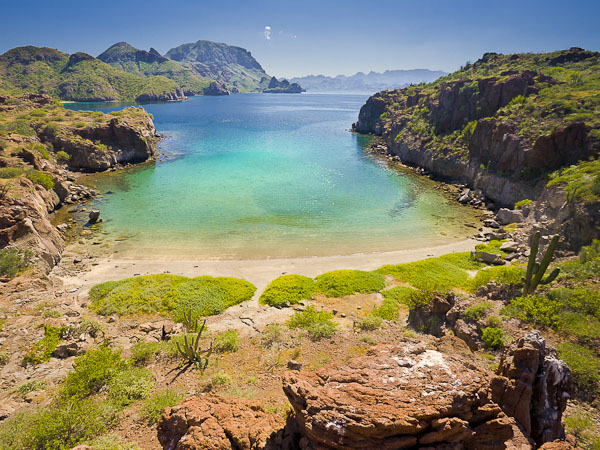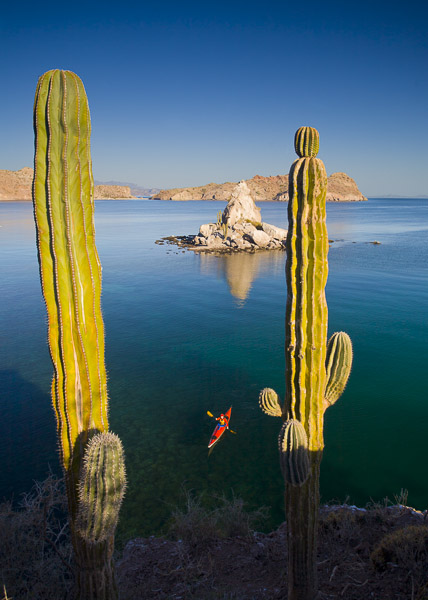
Some photographers travel to shoots without researching the site. The idea is to have “no preconceptions”, I suppose, or to look at scenes as they unfold with “fresh eyes”. I like the idea of “no preconceptions”, but I think the more you know about a place the better prepared you are, and the better you can anticipate and capture usable images. Being prepared means you’ll be acquainted with cliché images, the images everyone else has already done. It’s good to know and have seen the results of those who’ve gone before. Have an open mind, photograph in the moment, but go in prepared. Research is discovery.Research is also a springboard for going beyond. Learning about a destination beforehand is not just learning the scenic hotspots—but the geology, the cultural geography, the flora and fauna. My upcoming trip to Baja, for example, is a trip to Sonoran desert, with plenty of prickly plants and animals. Our destination is Isla Carmen. Through research I have learned that Carmen has a geology with uplifted limestone rock shelves (with white-sand beaches!) and andesite volcanic peaks and crests. Designing photographs in the field to capture these landforms takes on new and relevant meaning with this knowledge, and generates ideas for photos. And it’s because of research. If you’re headed for iconic vistas, capturing something new is more likely if you’ve done the research. It ups the likelyhood of capturing something new.
My trip research begins on the Internet using Google or Bing. It was on-line where I discovered Honeymoon Cove on Isla Danzante, one of those “Oh-my-god I’ve got to go there” locations near Carmen that we’ll now be certain to travel to. That foreknowledge means I’ll also be pumped up and ready to shoot when we arrive there. While researching Carmen I discovered a geology paper on Arroyo Blanco, a cove and white-rock canyon where 157-meter thick limestone lies exposed. It reveals an unbroken, five million year history of the Sea of Cortez. Knowing this, I’ll be sure to capture some overview shots, as well as some close-up details, of this amazing fossil record.

A research stop at my neighborhood library is also mandatory. I especially like discovering natural history books that highlight scenery and wildlife, and the best books contain text as well as photos that inform and inspire. Since my focus is more sea kayaking and natural history, I don’t find general travel books (Moon, Fodor, Rough Guide, Frommer, Lonely Planet, etc.) all that helpful, though they are certainly worth a look, especially for concise city descriptions. I always hope to find nature books, with or without images, for study and inspiration. There’s nothing like a well-written natural history text to fire me up and generate ideas.All the while during research, I develop a shot list that, importantly, also includes sketches. It isn’t just a list that says, for example, get a “close-up of cactus spines”, “sea kayaker floating on clear water over white sand”, “big sun sunrise with kayaker silhouette”. I make sketches of images I want to take. Words are too general. A good sketch nails just what I’ll be looking for, and serves as a better reminder. They’re pre-visualized mental pictures—the stuff of dreams. The sketches go along with the shot list in my trip journal in a page or two before the daily notes begin. I’ll also note useful camera settings, like exposure information for moonlight, a dark night sky, or underwater photography—data that isn’t routine. I’d rather not experiment with stuff like this in the field.

Another benefit of research is it shows the kind of photos that are possible. You sometimes get that from image research, but also from general information about an area. The desert’s a prickly place. I sketch a cactus spine close up, and a scorpion ready to strike. Then, too, Baja’s clear skies are legendary; the night sky fills with stars. I check the moon phase and discover we’ll have a new moon the second day, so we’ll have plenty of dark sky. And we’re at 22° N latitude, in spring time, so we’ll see the southern sky better than most summer locations in the States, important for photos of the Milky Way. I’ve sketched the Milky Way imagining Sagittarius on the horizon, with kayak or cactus for foreground. My strategy will be to take multiple tripod-mounted photos at high ISO’s and 20-30s duration, then use software to combine them to reducing noise. We’ll see. In past trips I’ve done star-trails with some success. The Milky Way will be a first.
All this research won’t lock me into just the shot list. On arrival I’ll be checking the postcard rack at a gift shop, for ideas I may have missed. Once I’m in the field, the shot list becomes not just a reference but a springboard, a going beyond. It serves as something to fall back should I ever feel stuck, but in the field one’s antenna needs to be tuned and in the moment. One thing’s for certain: I’ll have my eye glued to the viewfinder, looking here, looking there . . . looking, looking, looking.
Gary